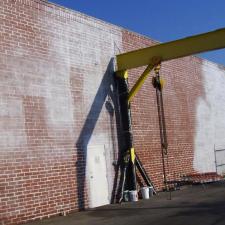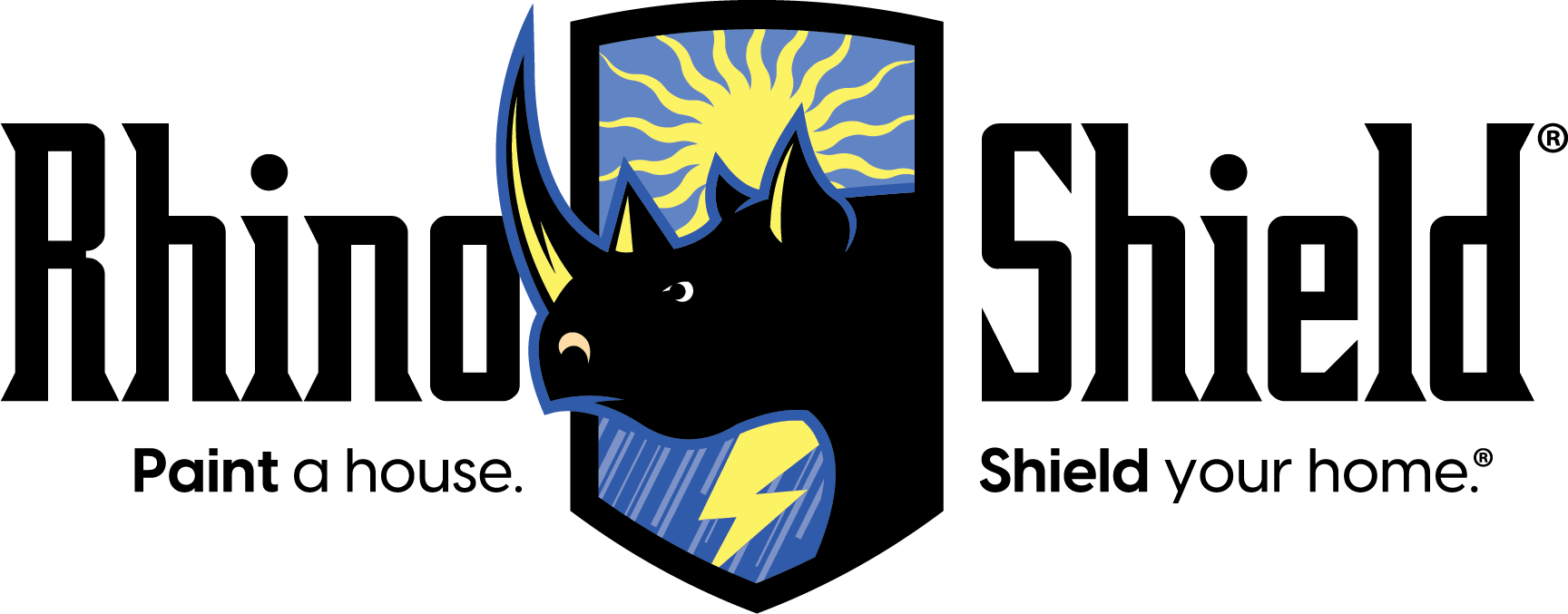
Have you ever looked at your brick home and thought about giving it a fresh coat of paint? Maybe you’ve noticed some areas looking a bit worn out, or perhaps you're just ready for a change. Painting brick isn't as straightforward as painting other surfaces, and we know you might have questions.
At Rhino Shield, we understand the unique challenges and questions that come with painting brick. "Can I paint over old, crumbling mortar?" or "What do I do if my bricks are glazed?" These are common concerns we hear, and in this guide, we'll address these and more, ensuring you're equipped with the knowledge to make the best decisions for your home. By the end of this article, you'll know the best practices for painting brick, the right products to use, and when it's best to call in the experts.
Evaluating Mortar Health Before Painting
Before you even think about choosing a paint color, it’s vital to check the health of your brick’s mortar. Old, decaying mortar can turn a new paint job into a homeowner's nightmare. Why? Because if the mortar is in poor condition, painting over it might just be putting a Band-Aid on a much larger issue. At Rhino Shield, we recommend a thorough evaluation by an expert. This is crucial because healthy mortar is the backbone of any successful brick painting project. Here's what could happen if you overlook this step:
- Long-term durability issues: Paint might initially hide mortar problems, but these issues can resurface, affecting both the appearance and integrity of your brickwork.
- Increased maintenance: Poor mortar can lead to frequent touch-ups and repairs, making your beautiful paint job short-lived.
The Risks of Sealing Weep Holes in Brick
Another common mistake is painting over the weep holes—small openings at the bottom of brick walls that allow moisture to escape. Sealing these can lead to moisture getting trapped inside the brick, which over time can damage both the brick and the mortar. Remember, these holes are there for a reason:
- Prevent moisture buildup: Ensuring weep holes are clear can prevent structural damage and maintain the health of your brick facade.
- Protect the integrity of your home: Trapped moisture can lead to mold growth and weaken the overall structure.
Challenges of Painting Over Glazed Brick
Glazed brick, with its shiny, protective coating, poses its own set of challenges. These bricks are beautiful but tricky when it comes to painting. At Rhino Shield, we often encounter homes where previous paint jobs on glazed bricks have failed because the paint simply doesn’t stick well. If you're dealing with glazed brick:
- Professional consultation is key: Our experts can advise whether painting is feasible or if the glazing makes it a no-go.
- Proper preparation: Special techniques and primers may be required to ensure the paint adheres properly.
Importance of Cleaning Brick Before Painting
Cleaning the brick surface thoroughly before painting is essential. Brick is porous and can absorb a lot of moisture, which often leads to mold or algae growth. If these aren't cleaned off properly:
- Poor paint adhesion and potential damage: Trapped grime can lead to paint failure and even damage the brick over time. Always start with a clean slate for the best results.
- Long-lasting finish: A clean surface ensures the paint adheres well and lasts longer.
Choosing the Right Products for Brick Painting
When it comes to painting brick, selecting the correct primer and paint is crucial for a lasting job. At Rhino Shield, we’ve developed a specialized primer that not only adheres well to brick but also enhances the durability of the mortar. Here’s why choosing the right products matters:
- Extend the life of your paint job: With the right primer and paint, your new color will not only look great but also last much longer, even on challenging surfaces like brick.
- Water-based vs. Oil-based products: In general, on brick, you do want water-based products. You generally don't want oil products on brick.
- Benefits of Pure Acrylic and Acrylic Urethane: For the clear coat, you want a pure acrylic, and even better would be an acrylic urethane for more longevity.
Rhino Shield offers two great solutions:
- Rhino Shield Ceramic Coating: This helps seal the bricks, keep out moisture, reduce wall temperatures, and comes in any color you want.
- Rhino Shield Clear Coat: This option is for brick building owners who do not want a painted brick look. The Rhino Clear helps rejuvenate mortar, offers water resistance, and helps the building stay clean, leaving you less likely to accumulate mold, mildew, and dirt.
Primer and Paint Application Techniques
When applying primer and paint to brick, technique is everything. A penetrating primer is key because brick is porous and you want to ensure the paint adheres well. Here are some tips:
- Use a thick primer: It looks better and fills in the pores or damaged brick areas.
- Avoid primer plus paint combinations: They don't do as adequate of a job.
- Two-coat system: Apply at least one primer coat and then a top coat for the best results.
Sheen and Color Options for Painted Brick
People are starting to have more fun with brick, playing around with different sheens and colors. Here’s what you need to know:
- Low Sheen vs. High Sheen: A lime wash look is very low sheen and matte, but higher sheens can add a modern touch.
- Popular Color Trends: From classic whites to bold, vibrant hues, painting brick can completely transform the look of your home.
When to Call in the Experts
While DIY projects can be rewarding, some tasks are best left to the professionals—especially when it comes to something as permanent and prominent as your home’s exterior. Hiring a professional painter ensures:
- Proper assessment and application: An expert can identify potential issues before they become major problems and ensure that the paint is applied correctly.
- Long-term satisfaction: Professionals have the right tools and expertise to make sure your paint job lasts.
Conclusion
Painting brick can be a great way to update the look of your home, but it comes with its own set of challenges. At Rhino Shield, we’re here to help you every step of the way. From evaluating the health of your mortar to choosing the right products and techniques, our experts are dedicated to ensuring your brick painting project is a success. We understand that Rhino Shield might not be for everyone. If you prefer a DIY approach or have specific aesthetic preferences, our products might not be the best fit. However, if you're looking for long-lasting, professional results, we’ve got you covered.
By following the tips and advice in this guide, you can ensure that your brick painting project is a success, whether you choose to do it yourself or hire a professional. Remember, a beautiful brick home starts with the right preparation, products, and techniques.
If you’d like a free, no-obligation quote for a Rhino Shield paint job, click the button below.

